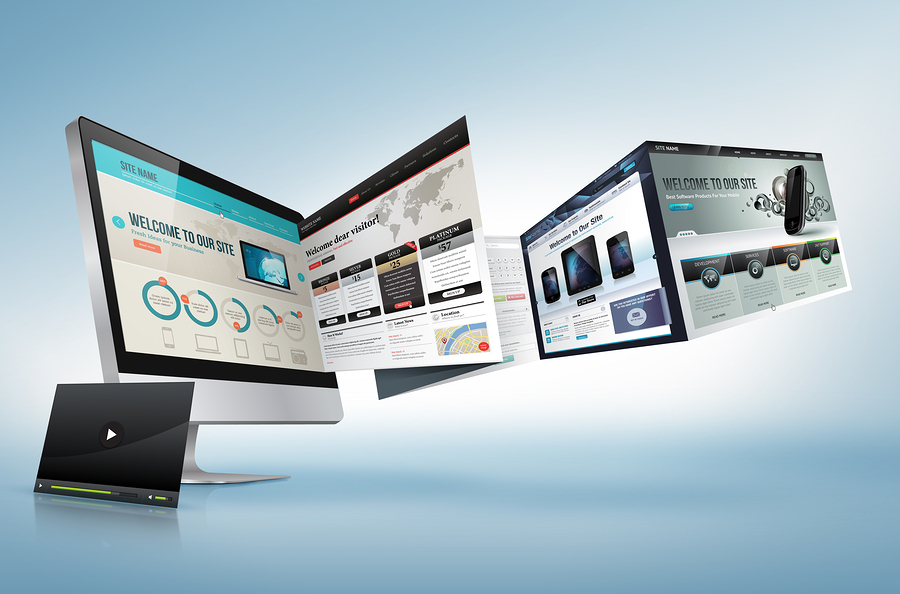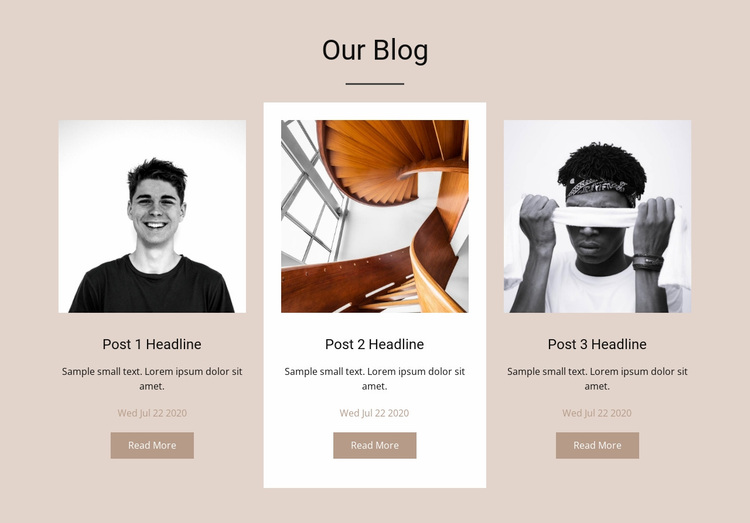Why Website Design is Crucial for SEO and Digital Marketing Success
Why Website Design is Crucial for SEO and Digital Marketing Success
Blog Article
Modern Internet Site Style That Records Interest and Transforms
In a progressively electronic landscape, contemporary website style has actually arised as a critical variable in catching individual interest and driving conversions. By strategically utilizing aesthetic hierarchy, responsive designs, and involving interactive aspects, developers can develop experiences that not just attract site visitors however additionally facilitate purposeful interactions. Furthermore, reliable call-to-action strategies play a crucial function in directing individuals toward preferred results. As we discover these important components, it ends up being clear that comprehending their interplay can considerably affect a website's performance and individual satisfaction. What are the crucial elements that truly make a distinction?
Value of Visual Power Structure
Visual hierarchy is an essential aspect in web site design, as it overviews users' focus and enhances their overall experience. By tactically organizing content, developers can direct individuals to the most essential details initially, therefore enhancing engagement and boosting usability. Effective visual pecking order employs different methods, consisting of dimension, color, spacing, and comparison. Larger components naturally attract the eye, while contrasting colors can highlight crucial messages, making them stand out amongst more suppressed parts.
Including a sensible flow in material plan is necessary; for circumstances, putting the most essential information at the top of a web page cultivates immediate acknowledgment. Constant use of typography, such as varying font sizes and styles, helps establish a clear material structure. This company not only help in navigating yet likewise develops trust, as individuals feel much more comfortable when they can easily discover what they are searching for.
Ultimately, a well-executed aesthetic power structure not only improves aesthetic appeal yet also considerably impacts individual behavior. By focusing on necessary aspects and making sure a seamless experience, developers can properly transform site visitors right into consumers, reinforcing the significance of this foundational design principle in modern website development.
Responsive Design for All Gadgets
Producing a seamless experience across numerous gadgets is important in today's electronic landscape, where individuals accessibility sites from tablets, desktop computers, and mobile phones alike. Receptive style is an essential technique that makes sure websites adjust fluidly to different display resolutions, orientations, and sizes. By utilizing flexible grids, photos, and CSS media inquiries, developers can develop layouts that keep aesthetic honesty and performance, despite the tool being made use of.
The significance of receptive layout extends beyond appearances; it directly affects individual engagement and conversion prices. A website that operates well on all tools encourages longer check outs and lowers bounce prices, as customers are most likely to engage with web content that is simple to navigate. Furthermore, search engines, particularly Google, focus on mobile-friendly sites in their rankings, making receptive layout an essential part of seo (SEO)
Integrating responsive style not only improves individual experience yet additionally improves the growth process. By producing a solitary website that functions across tools, businesses can save time and sources compared to establishing separate mobile and desktop variations. Ultimately, receptive design is a basic method for modern web site style, guaranteeing access and fulfillment for all customers, no matter their tool.
Engaging Interactive Aspects
While a responsive layout prepares for a useful website, integrating interesting interactive aspects is crucial for recording individual focus and fostering deeper links. Website Design. Interactive aspects, such as animations, quizzes, and clickable blog here infographics, produce an extra vibrant individual experience, encouraging visitors to spend even more time on the site
Integrating interactive features can likewise lead individuals via facility info, making it much easier to absorb web content. As an example, interactive sliders can illustrate item variants, while embedded videos can supply demonstrations or testimonies that resonate even more than static images or message. Moreover, gamification strategies, like incentives for finishing tasks or engaging with web content, can enhance user inspiration and retention.
Efficient use of interactive aspects not just enriches the user experience however can likewise cause greater conversion prices. By making communications pleasurable and helpful, companies can grow a feeling of commitment and trust with their target market. It is crucial to stabilize interactivity with performance; extremely intricate features might hinder site speed, adversely impacting customer complete satisfaction. Ultimately, incorporating properly designed interactive aspects can dramatically raise a website's effectiveness, driving engagement and conversions in today's competitive digital landscape.
Streamlined Navigation Practices
Effective navigating is a foundation of any kind of effective internet site, as it straight influences user experience and web content accessibility. Structured navigation practices make sure that individuals can easily situate information, boosting their communication with the site. A well-structured navigating menu ought to be easy and user-friendly, generally featuring a restricted variety of key categories to stay clear of frustrating visitors.
To achieve structured navigating, developers need to prioritize a hierarchical structure that realistically organizes web content. Executing breadcrumb tracks can offer users with context concerning their existing location within the website, enabling seamless backtracking. Furthermore, making use of drop-down food selections can effectively preserve room while still giving access to subcategories.
Responsive layout is vital, as navigation needs to be practical throughout all tools (Website Design). Mobile users, particularly, take advantage of touch-friendly food selections and collapsible areas that preserve usability without compromising visual appeals

Reliable Call-to-Action Approaches
A well-crafted call-to-action (CTA) is essential for guiding customers towards desired results on a web site, as it urges them to engage with material or buy. To optimize their efficiency, CTAs ought to be clear, compelling, and purposefully put throughout the site.
First, make use of action-oriented language that communicates necessity or worth, such as "Get going," "Join Now," or "Case Your Discount." This language not only inspires individuals yet also establishes clear expectations about the following actions.
2nd, consider design elements; CTAs need to stick out visually through contrasting colors, ample whitespace, and famous positioning. A switch that is easy to see and click boosts the chance of user interaction.
Furthermore, personalizing CTAs based upon customer behavior or demographics can considerably enhance interaction. Customized messages reverberate a lot more with individuals, driving greater conversion rates.

Final Thought
In conclusion, modern-day site style emphasizes the integration of aesthetic pecking order, responsive layouts, involving interactive components, streamlined navigation, and reliable call-to-action methods. These elements collectively enhance customer experience, making sure that visitors stay engaged and encouraged to explore content additionally. By prioritizing these design concepts, organizations can substantially improve customer retention and conversion rates, eventually leading to greater success in the digital landscape. The constant development of web layout great post to read highlights its critical function in efficient on the internet interaction and advertising and marketing.
In a progressively digital landscape, modern-day site style has emerged as a critical aspect in capturing user interest and driving conversions.Aesthetic power structure is a critical aspect in web site style, as it guides customers' focus and enhances their total experience.The importance of responsive layout extends past appearances; it straight impacts customer involvement and conversion prices.Integrating receptive design not just improves user experience but likewise streamlines the growth procedure. Ultimately, receptive design is a fundamental strategy for contemporary website layout, guaranteeing access and complete satisfaction for all customers, regardless of their tool.
Report this page